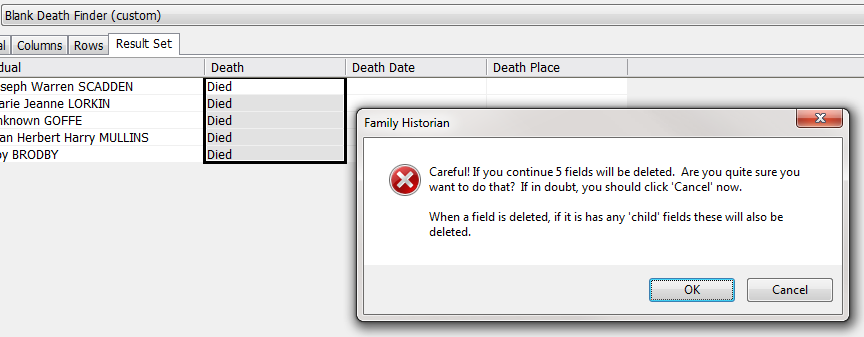Lists all people who have a Death Event which does not contain a Date or Place.
This allows all such facts to be easily deleted, but be aware that they may have other data such as Age, Address, Cause, Notes, Media and Citations, so are not necessarily completely empty. The Query All Empty Facts does test for completely empty facts, and thus is a safer option.
However, to delete these Death Events once you have the Result Set on screen, highlight the fields containing Died by a click on the first one and a Shift-click on the last one, then press the Delete key or use Edit > Delete, and after reading the warning message click OK.

Produced by admin (05/06/09)
Download: Blank Death Finder